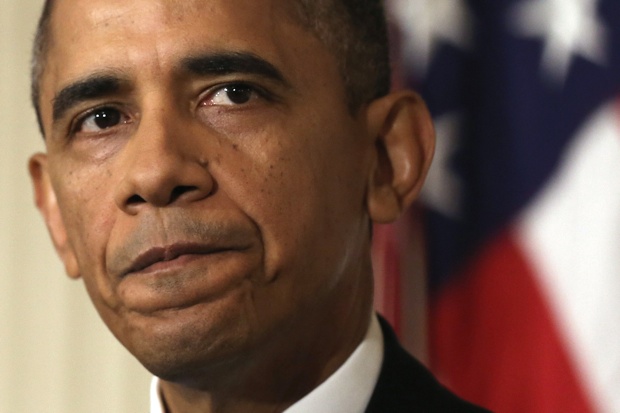Nashville, TN
All the drama coming out of Washington in the last few weeks has obscured some seriously good news: federal government spending is falling. And not at a trickle: think the White Cliffs of Dover. Not since the economic boom following 1945 have Americans seen such a rapid decline in the government’s claim on the nation’s resources — falling by a welcome $94 billion over two years. You need to go back to the end of the Korean war to find a time when US government spending has actually declined over two years. If Republicans in the House stick to the sequester and future caps already built into current budget law, federal spending will stay at this low level for years to come.
The Keynesians warned that the post-Cold War spending cuts that occurred under President Clinton would cause economic contraction — instead we had an employment boom to match all booms. And this boom under Clinton was the direct result of the huge drop in government spending. As if that weren’t proof enough, Obama’s economists revved up their economic model to justify spending an additional $830 billion in stimulus, saying it would keep unemployment low. Without a stimulus, they said, joblessness would be 8 per cent. Instead of making things better, subsequent joblessness was higher than they predicted, peaking at 10 per cent. By their own assumptions, things were worse than they would have been without spending a cent of that ‘stimulus’ money.
As my former colleague Milton Friedman often said, ‘Government spending is taxation.’ Beyond the essential services government provides — such as roads, courts, schools, police and fire services, and the military — government spending doesn’t actually create resources. It just redistributes resources. For every beneficiary of government largesse, there’s someone who pays for that largesse. When the money the government takes from workers and producers is used to pay people and companies not to work — food stamps, unemployment insurance, bailouts, Obamacare health subsidies — it’s a double-whammy.
Those who receive payments for not working have now found an alternative source of income without working, which causes them to work less. This slows the economy, not to mention the waste of human talent. Those who are taxed more (in Britain, by a VAT increase) get to keep less of what they earned.
In my two studies last year, I demonstrated that Keynesian stimulus programmes failed in most developed countries around the world. Nations with the greatest stimulus spending had the deepest recessions — while those with the least stimulus spending performed the best. The bigger the spending stimulus, the slower the recovery. I also showed historically that spending has never been associated with faster growth of the US economy. The notion of a Keynesian spending multiplier is right out of an Aesop fable. And who ever heard of a poor person spending himself into prosperity? No one!
Critics say that I have it all wrong: they say that government spending goes up because unemployment is high — not the reverse. It is true that government spending does go up when the economy underperforms, but it is also true that economic underperformance is exacerbated by the increase in spending. In the 1970s, the more Congress spent, the higher unemployment rose, and it was not until government spending and taxes were cut in the early 1980s that unemployment started its long-term decline. The same is true for the ‘Go-Go’ 1960s when President Kennedy cut tax rates and government spending.
The last few years have delivered a powerful refutation of Keynesian economics because the American economy has performed better in an era of downsizing government than it did during the wild spending ride of 2008-11. Most economists in Washington predicted that sequester budget cuts of just over $50 billion would slow the economy — or even cause a double-dip recession. But the sequester has gone forward almost without a glitch.
Even Barack Obama is minded to boast about the returning fiscal sanity. ‘Our deficits are now falling at the fastest rate since the end of World War II,’ he said last month. ‘I want to repeat that. Our deficits are going down faster than any time since before I was born.’ He’s right — in spite of what his advisers told him (and everyone else), cutting the size of government is working in America. And this is the best news to come out of Washington in many years.
Arthur Laffer is known for the Laffer Curve, which shows the trade-off between tax rates and revenue, but he credits the idea to the 14th-century Muslim scholar Ibn Khaldun.








Comments